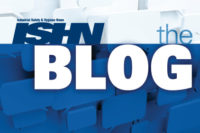Lessons learned:
Western Australia's Mines go fatality-free in 2012
2012 saw Western Australian Mining go fatality-free — the first time in over a century of records. In fact, the industry fell only a few days short of making it two years in a row. Sadly there have been four fatalities since that golden run. Compare today’s performance to the figures from the '40s and '50s when the accident rate in the industry was around two fatalities per thousand employees per year. At current employment levels this would mean some 200 fatalities per year. Clearly, something good has happened.
|
|
| (Fatal Accidents in the Western Australian Mining Industry 2000-2012: What lessons can we learn? (2014). Perth WA : Department of Mines and Petroleum. page 4) |

|
| Source: WADMP 2013 |
Variations in the bar chart to the left might give the impression that progress is erratic, but bear in mind that it is relatively simple to have, for example, one accident in which six people die. That would create a spike in a graph which would otherwise show a steady average of around four fatalities per annum. One of the problems of researching this field is that sample sizes are too small for rigorous statistical analysis. (Great! We like it that way!) All one can do is take visual inference from graphs such as this.
What we see is a continuing fall in the fatality rate despite an overall increase in employment in the industry. Many factors may be involved in this improvement. Enabling (non-prescriptive) legislation, and the ongoing mechanization of the industry would be the two candidates for top reason. Safety legislation in Australia, based on the concepts underpinning the Robens' report in the UK (1972), envisages workers and management working together to equal or better practices defined or suggested by the state. Employers are simply required to "…so far as is practicable, provide and maintain at a mine a working environment in which that employer’s employees are not exposed to hazards…" (Mines Safety and Inspection Act, 1994, sect. 9(1)). How they do so is left up to the employers.
It sounds simple enough. Is it over-simplified?
No. It is working! So, if it is working, what can we learn from it? In response to that question, Western Australia's Department of Mines and Petroleum has just released a new report entitled, "Fatal Accidents in the Western Australian Mining Industry 2000-2012: What lessons can we learn?"
This report looks first at causal factors ranging from the day of the week and the time of the day to how long the supervisor had been in the mine. Then it considers other critical factors at the time of the fatality including variation from manufacturers’ recommendations and inrush situations. Finally, it seeks areas of improvement — things management (including the OSH people) might look at with a view to making the workplace safer.
Fatal Accidents is available on-line at http://www.dmp.wa.gov.au/documents/Reports/RP_FatalAccidentsMINING_2000-12.pdf
Looking for a reprint of this article?
From high-res PDFs to custom plaques, order your copy today!






